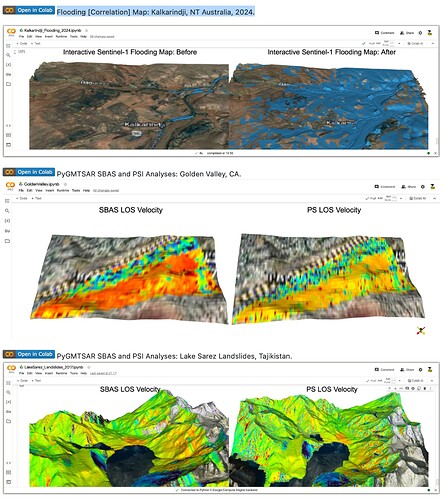Hello, I’m a beginner user.
I want to generate multiple coherence images that are coregistered with 1 super-master image. I’m using Sentinel-1 SLC products. (same location, subsequent dates)
I’m following this tutorial: [HAZA08_Lebanon-Damage-Assessment.pdf (esa.int)] (https://eo4society.esa.int/wp-content/uploads/2022/01/HAZA08_Lebanon-Damage-Assessment.pdf) . The tutorial only uses one pair of images, but I wish to create multiple coherence images. aka coherence from pairs of A-B, B-C, C-D… but all coregistered with A as the super-master.
I want to know
① how can one conduct batch processing for a graph that involves two images? I’m guessing it goes either like (1,2→1,3→,) or (1,2→2,3→,) and I want the coregistration to be the former, and coherence estimation to be the latter.
② My understanding is that the write file name has to include the first input file name for the batch to work. How should I name the output for processing on two images?
③I read this post
Coregistrating more than two Sentinel-1 SLC IW products - Microwave Toolbox - STEP Forum (esa.int) From it I imagine I should create multiple pairs of coregistration. Then, proceed to the coherence estimation graph in the Lebanon tutorial:
The tutorial reads the orb stack, but I need to select only the coregistered slaves for consequtive coherence generation. How should I modify the graph?
Also, a question about master selection:
④How does the function choose a Master? I’m guessing the default be the first image.
⑤Is there a way to compute the best image to be a master?(which apparently is possible on ENVI Sarscape). In the create stack section I found and clicked ‘Find optimal reference’(I thought ‘reference file’ refers to the master but I might be wrong) but the output band indicated the first image was the master anyway.
I apologize for the bombardment of questions. I would be grateful if you could answer even a part of it.
Thank you in advance!

